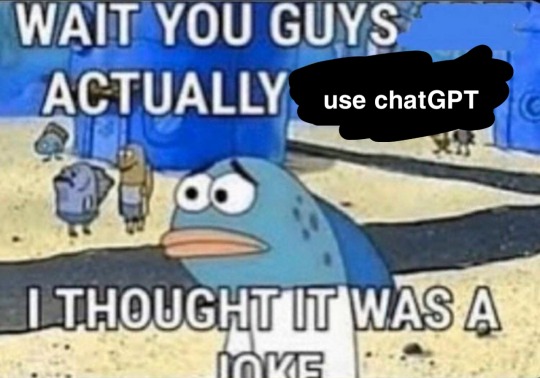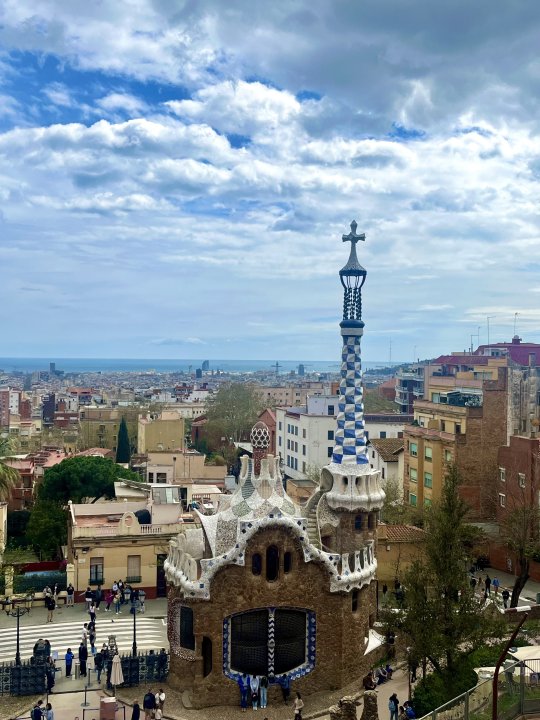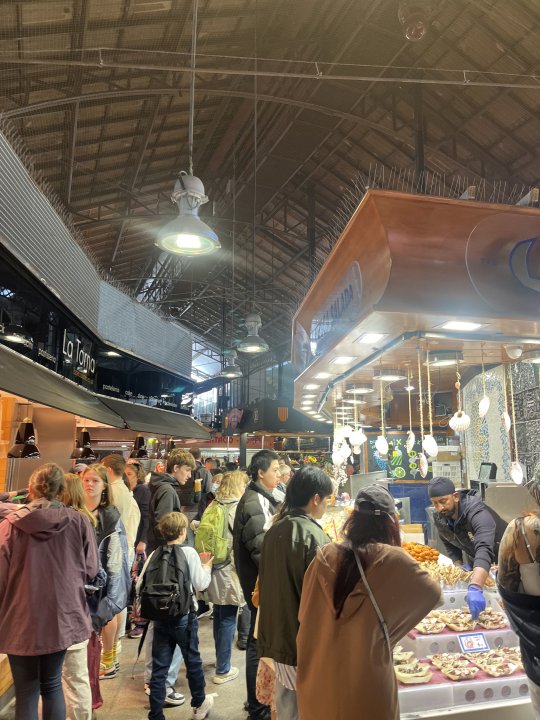#google map scraping meaning
Explore tagged Tumblr posts
Text

#google maps#google marketing agency#google map scraping#google map scraping tool#google map scraping free#google map scraping python#google map scraping make.com#google map scraping using python#google map scraping in urdu#how to do google map scraping#google map data scraping#cara scraping data google map#google map scraping fiverr#google map scraping github#google map scraping extension#google map scraping meaning#google map web scraping
0 notes
Note
Hello! Could I ask something about a foreign reader, maybe European, meeting Michael in Germany, Sae in Madrid and Rin in Japan while on a trip? Speaking in English since they don't know the language and having that immediate connection that neither of them have ever had before. That'd be very cute, and such a dream😫
“𝐥𝐨𝐯𝐞 𝐭𝐚𝐥𝐤”

a/n: love talk by wayv is a FIRE song
made reader both european and american if that’s okay! being american helps explain the english more
translation of each title: “do you speak english?” (german), “more beautiful than the sun” (spanish), “kotoba janakute mo/even without words” (japanese)
ft. kaiser michael, itoshi sae, itoshi rin
kaiser michael – "sprichst du english?"
berlin's streetlights hum like lullabies, the city bleeding into a haze of jazz from some underground bar. you don’t know where you are. literally. google maps is spinning like a roulette wheel and you're pretty sure the bratwurst vendor gave you a fake street name just to mess with you.
“you look like a lost little tourist,” a voice purrs, rich with amusement.
you turn to see a tall, golden-haired man leaning against a lamp post, hands in his coat pockets, smirk curled like a sin.
“you speak english?”
his eyes light up. “better than you, probably.”
he says it like he’s challenging you, like he wants to bicker for the next hour over espresso and late-night currywurst.
you blink. “oh my gosh, thank goodness. i thought i was gonna get kidnapped.”
“well,” he chuckles, stepping forward with a lazy saunter, “depends on who finds you first.”
he offers his hand. “michael. kaiser, actually. but you can call me whatever you want, hübsches mädchen.”
you laugh, hand in his. “i literally have no idea what you just said.”
“good. it’s more fun that way.”
and just like that, he walks with you, not behind or in front, but beside, like he already belongs there. he gets you a kebab, points out ridiculous graffiti, and lets you try to pronounce german street names while biting back laughter.
you don’t even remember what you were looking for in berlin. now it’s just him.
itoshi sae – "más guapa que el sol"
you’re melting. madrid in the summer is no joke. and you, brave but dumb, decided to wear jeans.
as you take refuge in a quiet little café, fanning yourself with a menu, the chair across from you scrapes against the floor.
“mind if i sit?” an unfamiliar voice in crisp english asks.
you look up. red hair. unreadable teal eyes. the aura of someone who absolutely hates small talk but will make an exception for you.
“… uh, sure?” you blink. “do i know you?”
he just shrugs and sits down, sipping from his water. “you were staring at the menu like it insulted you. figured i’d save you.”
you snort. “i can’t read anything. my spanish sucks.”
he lifts a brow. “american?”
“and european… you say that like it’s a bad thing.”
“it is,” he mutters. but the corner of his mouth quirks like he’s fighting a smile.
he orders for both of you without asking, and you're weirdly okay with it. later, over chilled wine and tortilla, you learn he’s a football player. kind of famous, actually. sae something.
“so you're like, a celebrity?”
“only here,” he says, looking out the window. then softer, “not with you though.”
you don’t know what it means. maybe he doesn’t either. but when he offers to walk you to your hotel, slowly, like he has nowhere else to be, you let him.
itoshi rin – “言葉じゃなくても”
you’re crying in the middle of a tokyo train station. not ugly crying, but overwhelmed, jetlagged, google-translate-is-failing-you crying.
someone taps your shoulder. you spin around, sniffling, trying to look like you didn’t just almost sob into your iced matcha.
he’s tall. sharp-eyed. slightly terrifying. but his voice is gentle when he asks, “are you okay?”
“do you… you speak english?” you manage.
“a little,” he says. “you’re lost?”
you nod.
without a word, he gestures for your phone. you hand it over and he starts typing something into your map app. once he finishes, he gives it back and mutters, “i’ll take you.”
“you don’t have to–”
“i want to,” he says. blunt. serious. a little red in the ears.
on the way, you try to make conversation, and he gives these awkward, short replies, like he wants to say more but doesn’t know how. still, he slows his pace to match yours. he buys you a melon soda when he notices you haven’t had water all day. he hovers protectively when the crowd thickens.
when you reach your destination, you thank him profusely. he just nods, looks like he wants to say something else… and hands you a tiny slip of paper.
his number. with a scribbled note underneath: “i could work on my english more. can i practice with you?”
and suddenly, you’re not so lost anymore.
© 𝐤𝐱𝐬𝐚𝐠𝐢
#blue lock#blue lock x reader#bllk#bllk x reader#rin itoshi x reader#itoshi rin x reader#itoshi sae x reader#sae itoshi x reader#kaiser michael x reader#michael kaiser x reader#love talk
643 notes
·
View notes
Text

I am, as usual, late lol, but Y'KNOW. This is gonna be a long, rambly post lol, sorry, I have a lot of thoughts.
2023 was a weird year for me, artwise. When it began I was still deep in my Art Block From Hell, which had begun in mid-2021 and lasted the entirety of 2022.
Being in the thick of such a ridiculously suffocating art block, for TWO AND A HALF YEARS, is like... I can't describe how fucking life-draining it is. It felt like something was fundamentally wrong with me -- like a part of me, which used to be as effortless as breathing or blinking my eyes, had ceased to function altogether. It wasn't just a regular art block, it was a complete identity crisis. I could no longer trust the instincts I'd honed over twenty-plus years, could no longer trust my sense of observation or my ability to recreate what I saw. I felt BROKEN, and every single time I picked up my tablet pen it was like I was scraping my insides with a spoon, trying to pick up whatever tiny dregs of dried-up, crusty shit I could manage to puke up onto my canvas. It was fucking painful and humiliating and completely demoralizing.
I'm not really sure what finally got me to do so, but sometime in summer (my memory is shit lol) I downloaded Game Maker, found a video tutorial on youtube, and just... gave myself over to it. I made myself learn how to use Aseprite, and working with pixels, making teeny-tiny little sprites, forced me to work in ways I usually don't. It was a lot harder for me to find the flaws in my art when my art was thirty-five pixels tall and the anatomy was stylized to communicate clear information rather than be a recreation or approximation of reality. I think I really do credit that time working on game dev as the thing that finally cracked loose all the gunk that was keeping me stuck -- I could not perpetuate the cycle of toxicity I'd fallen into because I could barely even conceptualize what 'good' or 'bad' pixel art even looked like lol. I just knew that I was making art, and for the first time in two years, it didn't feel like I was having to desperately beg the emaciated husks of my sense of self-worth and confidence to cooperate while doing so.
(I actually sort of abandoned my foray into game dev around August/September lol, as my adhd-brain, flitting around like a little hummingbird to every dopamine-rich-flower, is wont to do 🥲 But I wanna get back into it at some point!)
From there I had a rush of inspiration for an original project I've been mulling around in my head for years, and I wrote thousands of words in my worldbuilding document, made a map, developed the shell of a possible actual STORY. I returned to sketching. Conventional sketching. It was, at first, largely still comprised of that same demotivating struggle against myself, but I was so deep in the throes of inspiration (after several years of this project laying dormant in my google drive) that I NEEDED to sketch. So I kept going. And after a while, it got....... easier. And I started hating everything I made a little less. I painted, properly, for the first time in years. I stayed up late into the night, even if it meant I would be tired at work the next day, because drawing felt so damn GOOD again and I had missed that feeling so much. All I wanted to do was draw. For the first time in two and a half years, I could finally see the light at the end of the fucking tunnel.
I still don't think I'm quite out of the woods yet. My style is changing, as all artists' styles do over time, and that comes with stumbling adjustments. My confidence is still small and shaky and recovering; I still catch myself second-guessing what I've drawn, and even looking at some of the things here on my grid makes me cringe a little bit for one reason or another.
But compared to both 2021 and 2022, the volume of art, and in particular the volume of art I don't actively despise, is WAY higher, and I'm really really hopeful that that means I'm finding my footing again.
So! Here's to 2024, and to continuing to move towards the light at the end of the tunnel 🙏🌟 I'm gonna try.
#art vs artist#art vs artist 2023#my art#skella's ugly mug#I actually did an art vs artist in 2021 but I only ever posted it on facebook lol I wasn't confident enough to post it anywhere else#purple and orange/yellow continues to be my favorite color pallet apparently#sorry not sorry for being sappy on my own blog <3333#long post
15 notes
·
View notes
Text
The open internet once seemed inevitable. Now, as global economic woes mount and interest rates climb, the dream of the 2000s feels like it’s on its last legs. After abruptly blocking access to unregistered users at the end of last month, Elon Musk announced unprecedented caps on the number of tweets—600 for those of us who aren’t paying $8 a month—that users can read per day on Twitter. The move follows the platform’s controversial choice to restrict third-party clients back in January.
This wasn’t a standalone event. Reddit announced in April that it would begin charging third-party developers for API calls this month. The Reddit client Apollo would have to pay more than $20 million a year under new pricing, so it closed down, triggering thousands of subreddits to go dark in protest against Reddit’s new policy. The company went ahead with its plan anyway.
Leaders at both companies have blamed this new restrictiveness on AI companies unfairly benefitting from open access to data. Musk has said that Twitter needs rate limits because AI companies are scraping its data to train large language models. Reddit CEO Steve Huffman has cited similar reasons for the company’s decision to lock down its API ahead of a potential IPO this year.
These statements mark a major shift in the rhetoric and business calculus of Silicon Valley. AI serves as a convenient boogeyman, but it is a distraction from a more fundamental pivot in thinking. Whereas open data and protocols were once seen as the critical cornerstone of successful internet business, technology leaders now see these features as a threat to the continued profitability of their platforms.
It wasn’t always this way. The heady days of Web 2.0 were characterized by a celebration of the web as a channel through which data was abundant and widely available. Making data open through an API or some other means was considered a key way to increase a company’s value. Doing so could also help platforms flourish as developers integrated the data into their own apps, users enriched datasets with their own contributions, and fans shared products widely across the web. The rapid success of sites like Google Maps—which made expensive geospatial data widely available to the public for the first time—heralded an era where companies could profit through free, mass dissemination of information.
“Information Wants To Be Free” became a rallying cry. Publisher Tim O’Reilly would champion the idea that business success in Web 2.0 depended on companies “disagreeing with the consensus” and making data widely accessible rather than keeping it private. Kevin Kelly marveled in WIRED in 2005 that “when a company opens its databases to users … [t]he corporation’s data becomes part of the commons and an invitation to participate. People who take advantage of these capabilities are no longer customers; they’re the company’s developers, vendors, skunk works, and fan base.” Investors also perceived the opportunity to generate vast wealth. Google was “most certainly the standard bearer for Web 2.0,” and its wildly profitable model of monetizing free, open data was deeply influential to a whole generation of entrepreneurs and venture capitalists.
Of course, the ideology of Web 2.0 would not have evolved the way it did were it not for the highly unusual macroeconomic conditions of the 2000s and early 2010s. Thanks to historically low interest rates, spending money on speculative ventures was uniquely possible. Financial institutions had the flexibility on their balance sheets to embrace the idea that the internet reversed the normal laws of commercial gravity: It was possible for a company to give away its most valuable data and still get rich quick. In short, a zero interest-rate policy, or ZIRP, subsidized investor risk-taking on the promise that open data would become the fundamental paradigm of many Google-scale companies, not just a handful.
Web 2.0 ideologies normalized much of what we think of as foundational to the web today. User tagging and sharing features, freely syndicated and embeddable links to content, and an ecosystem of third-party apps all have their roots in the commitments made to build an open web. Indeed, one of the reasons that the recent maneuvers of Musk and Huffman seem so shocking is that we have come to expect data will be widely and freely available, and that platforms will be willing to support people that build on it.
But the marriage between the commercial interests of technology companies and the participatory web has always been one of convenience. The global campaign by central banks to curtail inflation through aggressive interest rate hikes changes the fundamental economics of technology. Rather than facing a landscape of investors willing to buy into a hazy dream of the open web, leaders like Musk and Huffman now confront a world where clear returns need to be seen today if not yesterday.
This presages major changes ahead for the design of the internet and the rights of users. Twitter and Reddit are pioneering an approach to platform management (or mismanagement) that will likely spread elsewhere across the web. It will become increasingly difficult to access content without logging in, verifying an identity, or paying a toll. User data will become less exportable and less shareable, and there will be increasingly fewer expectations that it will be preserved. Third-parties that have relied on the free flow of data online—from app-makers to journalists—will find APIs ever more expensive to access and scraping harder than ever before.
We should not let the open web die a quiet death. No doubt much of the foundational rhetoric of Web 2.0 is cringeworthy in the harsh light of 2023. But it is important to remember that the core project of building a participatory web where data can be shared, improved, critiqued, remixed, and widely disseminated by anyone is still genuinely worthwhile.
The way the global economic landscape is shifting right now creates short-sighted incentives toward closure. In response, the open web ought to be enshrined as a matter of law. New regulations that secure rights around the portability of user data, protect the continued accessibility of crucial APIs to third parties, and clarify the long-ambiguous rules surrounding scraping would all help ensure that the promise of a free, dynamic, competitive internet can be preserved in the coming decade.
For too long, advocates for the open web have implicitly relied on naive beliefs that the network is inherently open, or that web companies would serve as unshakable defenders of their stated values. The opening innings of the post-ZIRP world show how broader economic conditions have actually played the larger role in architecting how the internet looks and feels to this point. Believers in a participatory internet need to reach for stronger tools to mitigate the effects of these deep economic shifts, ensuring that openness can continue to be embedded into the spaces that we inhabit online.
WIRED Opinion publishes articles by outside contributors representing a wide range of viewpoints. Read more opinions here. Submit an op-ed at [email protected].
19 notes
·
View notes
Text
fieldwork incident # ??? / ???: in retrospect, we should've turned the car around when we drove past the abandoned and apparently unoccupied husk of a trailer that had "THIS IS OUR HOUSE, LEAVE" and a frowny face painted on the side, and reached the closed wire gate with a cow carcass lying in the scrub nearby. (you come across those sometimes where there's ranching areas. i don't wish the experience on anyone.) in our defense, the other road we could've taken also had a closed wire gate across it, and Google Maps was assuring us that this was an alternative that would get us where we were going. the rental vehicle has 4WD, but low clearance. and the dirt road is flat but has occasional water benches and isn't particularly tended and suddenly there's a bump and the car bottoms out. a couple of the service lights come on, briefly. at this point i'm a little sunk cost fallacy and we try to keep going anyway, then the dirt road starts to disappear into dry creeks and scattered shrubs, to the point where i have to get out of the car to figure out which direction we're going. we're at the bottom of a sage scrub basin and it's hot out -- this happened to be in the middle of the record-breaking heat wave. there's turkey vultures circling, off to the side. i can see all the way to the horizon in all directions, mountains rising up at the edges. i see a jackrabbit streak off into the brush. i don't know if you've ever encountered a jackrabbit out in the sage scrub. they feel like omens every time.
we turn the car around and make it back to the main road. we realize a couple crucial things:
the open gate we'd passed through initially actually had a "NO TRESPASSING, PRIVATE RANCH PROPERTY" sign strung up on it. why was it open? not sure.
there's very much four different service lights on, including the "check engine" light.
we're supposed to be going up another dirt road to do a couple more days of fieldwork in the middle of nowhere and then do a long drive to Utah. the rental agencies are both a 2.5 - 3 hour drive in either direction. mechanics are similarly too far or closed for the day already.
(i did call our postdoc to update her on our situation and get advice. she'd later send a text saying "I looked it up and scraping the bottom of the car wouldn't cause the "check engine light' to turn on, so it must be just an old car problem!" and after that i decided to rely on my own judgment instead.)
sometimes you just gotta do what you gotta do and sometimes that means using an increasingly sketchy car for three more days of fieldwork I GUESS.
#field notes#cw animal death#long post#the Incidents continue#we did also start losing pressure in one of the tires and had to refill it a couple times at gas stations#and we did almost get stuck on a mountain road at one point bc the 4WD system wouldn't activate#since that was one of the things that needed service? trying to turn the car around meant it was just digging itself into the gravel#did i learn any lessons here? tbh mostly that it'd be nice if my advisor would invest in a car with like. 4WD and clearance for the lab.#but ultimately this all turned out fine#we got the car switched out after a few days#it just felt a lil sketchy at times
4 notes
·
View notes
Text
What happened to the cycle of renewal? Where are the regular, controlled burns?
Like the California settlers who subjugated the First Nations people and declared war on good fire, the finance sector conquered the tech sector.
It started in the 1980s, the era of personal computers — and Reaganomics. A new economic and legal orthodoxy took hold, one that celebrated monopolies as “efficient,” and counseled governments to nurture and protect corporations as they grew both too big to fail, and too big to jail.
For 40 years, we’ve been steadily reducing antitrust enforcement. That means a company like Google can create a single great product (a search engine) and use investors’ cash to buy a mobile stack, a video stack, an ad stack, a server-management stack, a collaboration stack, a maps and navigation stack — all while repeatedly failing to succeed with any of its in-house products.
It’s hard to appreciate just how many companies tech giants buy. Apple buys other companies more often than you buy groceries.
These giants buy out their rivals specifically to make sure you can’t leave their walled gardens. As Mark Zuckerberg says, “It is better to buy than to compete,” (which is why Zuckerberg bought Instagram, telling his CFO that it was imperative that they do the deal because Facebook users preferred Insta to FB, and were defecting in droves).
As these companies “merge to monopoly,” they are able to capture their regulators, ensuring that the law doesn’t interfere with their plans for literal world domination.
When a sector consists of just a handful of companies, it becomes cozy enough to agree on — and win — its lobbying priorities. That’s why America doesn’t have a federal privacy law. It’s why employees can be misclassified as “gig worker” contractors and denied basic labor protections.
It’s why companies can literally lock you out of your home — and your digital life — by terminating your access to your phone, your cloud, your apps, your thermostat, your door-locks, your family photos, and your tax records, with no appeal — not even the right to sue.
But regulatory capture isn’t merely about ensuring that tech companies can do whatever they want to you. Tech companies are even more concerned with criminalizing the things you want to do to them.
Frank Wilhoit described conservativism as “exactly one proposition”:
There must be in-groups whom the law protects but does not bind, alongside out-groups whom the law binds but does not protect.
This is likewise the project of corporatism. Tech platforms are urgently committed to ensuring that they can do anything they want on their platforms — and they’re even more dedicated to the proposition that you must not do anything they don’t want on their platforms.
They can lock you in. You can’t unlock yourself. Facebook attained network-effects growth by giving its users bots that logged into Myspace on their behalf, scraped the contents of their inboxes for the messages from the friends they left behind, and plunked them in their Facebook inboxes.
Facebook then sued a company that did the same thing to Facebook, who wanted to make it as easy for Facebook users to leave Facebook as it had been to get started there.
Apple reverse-engineered Microsoft’s crown jewels — the Office file-formats that kept users locked to its operating systems — so it could clone them and let users change OSes.
Try to do that today — say, to make a runtime so you can use your iOS apps and media on an Android device or a non-Apple desktop — and Apple will reduce you to radioactive rubble.
Big Tech has a million knobs on the back-end that they can endlessly twiddle to keep you locked in — and, just as importantly, they have convinced governments to ban any kind of twiddling back.
This is “felony contempt of business model.”
Governments hold back from passing and enforcing laws that limit the tech giants in the name of nurturing their “efficiency.”
But when states act to prevent new companies — or users, or co-ops, or nonprofits — from making it easier to leave the platforms, they do so in the name of protecting us.
Rather than passing a privacy law that would let them punish Meta, Apple, Google, Oracle, Microsoft and other spying companies, they ban scraping and reverse-engineering because someone might violate the privacy of the users of those platforms.
But a privacy law would control both scrapers and silos, banning tech giants from spying on their users, and banning startups and upstarts from spying on those users, too.
Rather than breaking up ad-tech, banning surveillance ads, and opening up app stores, which would make tech platforms stop stealing money from media companies through ad-fraud, price-gouging and deceptive practices, governments introduce laws requiring tech companies to share (some of) their ill-gotten profits with a few news companies.
This makes the news companies partners with the tech giants, rather than adversaries holding them to account, and makes the news into cheerleaders for massive tech profits, so long as they get their share. Rather than making it easier for the news to declare independence from Big Tech, we are fusing them forever.
We could make it easy for users to leave a tech platform where they are subject to abuse and harassment — but instead, governments pursue policies that require platforms to surveil and control their users in the name of protecting them from each other.
We could make it easy for users to leave a tech platform where their voices are algorithmically silenced, but instead we get laws requiring platforms to somehow “balance” different points of view.
The platforms aren’t merely combustible, they’re always on fire. Once you trap hundreds of millions — or billions — of people inside a walled fortress, where warlords who preside over have unlimited power over their captives, and those captives the are denied any right to liberate themselves, enshittification will surely and inevitably follow.
Laws that block us seizing the means of computation and moving away from Big Tech are like the heroic measures that governments undertake to keep people safe in the smouldering wildland-urban interface.
These measures prop up the lie that we can perfect the tech companies, so they will be suited to eternal rule.
Rather than building more fire debt, we should be making it easy for people to relocate away from the danger so we can have that long-overdue, “good fire” to burn away the rotten giants that have blotted out the sun.
What would that look like?
Well, this week’s news was all about Threads, Meta’s awful Twitter replacement devoted to “brand-safe vaporposting,” where the news and controversy are not welcome, and the experience is “like watching a Powerpoint from the Brand Research team where they tell you that Pop Tarts is crushing it on social.”
Threads may be a vacuous “Twitter alternative you would order from Brookstone,” but it commanded a lot of news, because it experienced massive growth in just hours. “Two million signups in the first two hours” and “30 million signups in the first morning.”
That growth was network-effects driven. Specifically, Meta made it possible for you to automatically carry over your list of followed Instagram accounts to Threads.
Meta was able to do this because it owns both Threads and Instagram. But Meta does not own the list of people you trust and enjoy enough to follow.
That’s yours.
Your relationships belong to you. You should be able to bring them from one service to another.
Take Mastodon. One of the most common complaints about Mastodon is that it’s hard to know whom to follow there. But as a technical matter, it’s easy: you should just follow the people you used to follow on Twitter —either because they’re on Mastodon, too, or because there’s a way to use Mastodon to read their Twitter posts.
Indeed, this is already built into Mastodon. With one click, you can export the list of everyone you follow, and everyone who follows you. Then you can switch Mastodon servers, upload that file, and automatically re-establish all those relationships.
That means that if the person who runs your server decides to shut it down, or if the server ends up being run by a maniac who hates you and delights in your torment, you don’t have to petition a public prosecutor or an elected lawmaker or a regulator to make them behave better.
You can just leave.
Meta claims that Threads will someday join the “Fediverse” (the collection of apps built on top of ActivityPub, the standard that powers Mastodon).
Rather than passing laws requiring Threads to prioritize news content, or to limit the kinds of ads the platform accepts, we could order it to turn on this Fediverse gateway and operate it such that any Threads user can leave, join any other Fediverse server, and continue to see posts from the people they follow, and who will also continue to see their posts.
youtube
Rather than devoting all our energy to keep Meta’s empire of oily rags from burning, we could devote ourselves to evacuating the burn zone.
This is the thing the platforms fear the most. They know that network effects gave them explosive growth, and they know that tech’s low switching costs will enable implosive contraction.
The thing is, network effects are a double-edged sword. People join a service to be with the people they care about. But when the people they care about start to leave, everyone rushes for the exits. Here’s danah boyd, describing the last days of Myspace:
If a central node in a network disappeared and went somewhere else (like from MySpace to Facebook), that person could pull some portion of their connections with them to a new site. However, if the accounts on the site that drew emotional intensity stopped doing so, people stopped engaging as much. Watching Friendster come undone, I started to think that the fading of emotionally sticky nodes was even more problematic than the disappearance of segments of the graph. With MySpace, I was trying to identify the point where I thought the site was going to unravel. When I started seeing the disappearance of emotionally sticky nodes, I reached out to members of the MySpace team to share my concerns and they told me that their numbers looked fine. Active uniques were high, the amount of time people spent on the site was continuing to grow, and new accounts were being created at a rate faster than accounts were being closed. I shook my head; I didn’t think that was enough. A few months later, the site started to unravel.
Tech bosses know the only thing protecting them from sudden platform collapse syndrome are the laws that have been passed to stave off the inevitable fire.
They know that platforms implode “slowly, then all at once.”
They know that if we weren’t holding each other hostage, we’d all leave in a heartbeat.
But anything that can’t go on forever will eventually stop. Suppressing good fire doesn’t mean “no fires,” it means wildfires. It’s time to declare fire debt bankruptcy. It’s time to admit we can’t make these combustible, tinder-heavy forests safe.
It’s time to start moving people out of the danger zone.
It’s time to let the platforms burn.
2 notes
·
View notes
Text
Just this last week I was at a barbecue, and was talking with someone who was visiting from out of town. She mentioned that she had looked up recommendations for places to eat... by asking ChatGPT.
Promptly followed by "but every place it recommended turned out to be permanently closed."
(Thinking about it now, I assume that's because there would be more online chatter about restaurants that have closed down, meaning they'd be more prominent in AI data scraping)
I think I should get some kind of aware for not saying anything more than "yeah don't use chatgpt for that kind of thing" and giving a few recommendations for several places that WERE actually open and available. I just.... Tourism sites? Foodie blogs? Reddit recommendations? Hell, just look up restaurants on google maps! There's so many ways to get the info you want, and that an older, clearly knows-her-stuff person would use Worse Autocomplete as a first choice STILL baffles me.

144K notes
·
View notes
Text
Planning Your Next Road Trip? Here Is Your Ultimate Checklist

With the wind in your hair and the promise of new adventures around every corner, there is always something special about hitting the open road. Whether you are a resident or a visitor, a road trip along Chennai's East Coast Road (ECR) offers astonishing coastal views, charming villages, and many new places to explore. To ensure a smooth and enjoyable experience, here is a checklist that can go along before you embark on your journey.
Keep A Check On Your Vehicle
Make sure your vehicle is road trip-ready before setting off. Have a check on the engine oil, coolant levels, and tire pressure. It is wise to carry a spare tire, jack, and essential tools for emergencies. Always remember that a well-prepared vehicle means fewer chances of unexpected breakdowns along the scenic ECR.
Pack the Essentials
Keep the road trip essentials within reach. This includes your driving license, vehicle registration, insurance papers, and a fully charged power bank. If you're planning to take a few detours and explore the lesser-known spots along the way, bring some snacks and bottled water to keep hunger at bay.
Plan Your Route
Although spontaneity is part of the charm of a road trip, it helps to have a rough idea of your route. Mark the main attractions along the ECR like Mahabalipuram, Kovalam Beach, and DakshinaChitra. When cell services become spotty, Google Maps and offline navigation apps can be lifesavers.
Create the Perfect Playlist
No road trip is complete without the right soundtrack. Curate a playlist that keeps the vibe upbeat, and don’t forget to include some local Tamil tunes to get into the spirit of Tamil Nadu. It’s the perfect way to set the mood as you drive along the picturesque coast.
Pack for Comfort
Bring along neck pillows and a light blanket, and wear comfy clothing to make those long stretches of driving more comfortable. Sunglasses and a good hat can also come in handy, especially with the sun shining brightly over the coastal road.
Bring a First Aid Kit
Safety first! Pack a basic first-aid kit with band-aids, antiseptic wipes, painkillers, and any essential medications you might need. It's better to be prepared. You never know when a minor scrape or headache might strike.
Keep Your Camera Ready
ECR is known for its stunning landscapes, so make sure your camera or smartphone is fully charged and ready to capture those picturesque moments. From sunrise shots over the Bay of Bengal to selfies at the historic rock carvings of Mahabalipuram, there will be plenty of memories to capture along the way.
Look Up Local Eateries
One of the best parts of a road trip is the opportunity to try out local food. Keep an eye out for popular eateries and seafood shacks along the ECR, where you can sample the freshest catch of the day. Don’t forget to try local delicacies like the famous filter coffee, biryani, kalakki, and Chettinad chicken.
Book a Comfortable Stay
There's nothing like retreating to a comfortable place after a day of exploring and adventure. That’s when you can book the Kaldan Samudhra Palace 5 Star Hotels in ECR. This beachside resort, set along the scenic ECR, offers a unique blend of luxury and cultural charm. With its Rajasthani-inspired architecture and vibrant interiors, it transports you to a royal haven while keeping you connected to the calming sea breeze. The palace resort offers a range of fun activities to elevate your stay, from beachside sunrise yoga sessions to traditional Rajasthani performances, making it the perfect stop for relaxation and cultural immersion. It’s the ideal base to unwind before continuing your journey along Chennai’s beautiful coast.
Set the Right Attitude
A road trip is all about the journey, so embrace every moment, even if things don’t go exactly as planned. Be open to making unplanned stops, chatting with locals, and taking in the sights and sounds of the road.
With this checklist in hand, you’re all set to embark on your road trip along the beautiful Chennai/ECR coastline. So gather your friends, fuel up, and get ready to create memories that will last a lifetime.
And don’t forget—when it’s time for a break, Kaldan Samudhra Palace awaits with its warm hospitality and stunning beachfront views. Happy road-tripping! Embark on a journey into paradise and book your stay today at Kaldan Samudhra Palace. For bookings & reservations, visit www.kaldanhotels.com or call us @ +91 8925814910
0 notes
Text
The New Search Era: AI Prioritises Data, Not Destination
Here’s what no one tells you about the future of search: it’s no longer about sending traffic to your website. It’s about serving answers directly before a user ever clicks. Google’s AI Overviews are making that reality loud and clear.
If you’ve noticed your organic clicks dropping, your carefully crafted blog content being skimmed past, or your product pages buried under zero-click results, you’re not alone.
The game has changed. And in this new AI-first landscape, the brands that win are the ones who show up with data, not fluff. Insights, not intros. Clarity, not clutter.
Let’s break down what’s really happening and what smart B2B startups need to do about it.
Forget Rankings. Focus on Responses.
Traditional SEO taught us to chase traffic. Rank high, get the clicks, nurture the lead. Simple, right?
But AI Overviews? They’re flipping that logic.
Search engines are no longer prioritising where to send users. Instead, they’re trying to eliminate the need for a click at all.
Google’s AI now scrapes and compiles information from multiple sources to deliver “answers” directly on the results page. And while that might be great for users, for brands it means one thing:
If your content isn’t structured to feed the AI’s understanding, you’re invisible.
Your Website Isn’t the Destination, Your Data Is.
If you’re still writing content to “rank for keywords,” it’s time to recalibrate.
AI is no longer ranking pages based on old-school SEO metrics. It’s evaluating how well your content answers intent-rich queries, fits schema markup, and integrates into knowledge graphs.
In other words, AI isn’t looking for pretty blog posts. It’s looking for credible data.
That means your marketing team needs to start thinking like a product team:
What structured content can we surface?
Are we using a schema to tag it?
Can our data be easily parsed and pulled into AI summaries?
Because in this world, being source material beats being page one.
The Rise of the “Answer Engine”
Let’s call this what it is: we’ve entered the Answer Engine era.
And your goal isn’t just visibility anymore, it’s extractability. If AI can’t easily extract meaning from your site, you don’t get featured. Period.
That’s where Answer Engine Optimization (AEO) comes in. It’s not just the evolution of SEO. It’s what connects your brand to the way search works now.
AEO helps you:
Make your site machine-readable
Align content to high-intent search patterns
Build topic authority across your niche
Show up in AI Overviews and voice search queries
So, What Should You Be Doing Now?
If you’re a startup with limited marketing resources, here’s the real talk:
You don’t need more content. You need better signals.
That means: ✔ Structuring your existing content with schema ✔ Prioritising entity mapping and topic clusters ✔ Using clear, concise language that aligns with user intent ✔ Thinking beyond blogs — Use case pages, product documentation, FAQs, and glossaries all matter
This is the kind of strategy you won’t get from a junior marketer or your old SEO playbook.
AI’s Not the Enemy. But It’s Not Waiting for You
Most bootstrapped founders I talk to are still wondering why their content isn’t performing. The truth?
You’re not behind because your product isn’t good. You’re behind because your data isn’t optimised for the new rules of search.
This isn’t just a content shift. It’s a mindset shift.
And if your internal team isn’t set up to think strategically about AEO, structured content, and AI-readiness, then it’s time to bring in leadership that can.
Final Thoughts: Don’t Just Show Up — Be Found
We’re moving into a world where search engines don’t just recommend. They respond. And the brands that get seen will be the ones built for extraction, not just exploration.
If you’re ready to align your SEO and marketing with where search is going, not where it’s been. AEO isn’t optional. It’s urgent.
Need Help Becoming AI-Search Ready?
At JJ Creative Media Co., we help B2B startups and lean tech teams rethink their SEO from the ground up, through structured strategy, smart content, and executive-level marketing leadership.
Want to check if your site is AEO-ready?
[Download the 7-Point AEO Readiness Checklist] (gated asset CTA) Or let’s talk about how a Fractional CMO can help realign your marketing for the AI era.
Contact me at JJ Creative Media Co.
1 note
·
View note
Text
Small Towns, Big Reach: How Local Search Hubs Are Powering Business Visibility Where It Matters Most

Local Discovery Is Changing Fast — And Small Towns Are Catching Up
Try this. You're driving through Kingman, Arizona. You’re low on gas and craving a good meal. Google shows you chains and ad-heavy results. But what about the local diner two blocks away that’s been feeding people for 40 years? Unless you know the name or stumble upon it, chances are—you’ll miss it.
That's the reality many small businesses face in rural communities. They’re there. They’re good. But they’re invisible to most people looking online. Search engines weren’t designed for close-knit, low-density towns. They’re built for global answers, not neighborhood insights.
This is where hyper-local platforms come in—and change everything.
Focused directories built for specific areas, like Mohave County, aren’t just filling a gap. They’re redefining what it means to find something nearby. Instead of battling irrelevant results or ads, users get clean, reliable info—hours of operation, contact details, maps, and reviews, all tailored to one region.
Want to see how that works in real-time? Just look at Local Businesses Kingman, AZ—you’ll find more than 10,000 local listings, 2,800+ business categories, and community-added reviews that actually tell you something useful. That’s not just convenience—it’s accuracy backed by local insight.
The growth of these platforms isn’t accidental. They meet real needs—both for locals trying to find trusted services, and for business owners trying to be seen by the very people they serve.
So how exactly do these hubs work better? Let’s look deeper.
Why Rural Business Listings Need Their Own Approach
Most big directories treat small towns as footnotes. Try searching for a plumber in Fort Mohave and you’ll likely get listings from another state—or dead links from businesses that shut down five years ago.
It happens because large search engines pull data from scattered sources. And in rural regions, that data is often:
Outdated
Generic
Or worse—missing entirely
On the flip side, hyper-local platforms take the time to gather verified info from local business owners. They aren’t guessing which categories apply. They’re not pulling hours from scraped data. They’re talking to the people behind the counters and toolsheds.
That leads to something critical: trust.
When people see that the info is coming from a local source—be it reviews, photos, or listings—they trust it more. It’s not about scale. It’s about accuracy and relevance.
That’s especially true in places where word-of-mouth still drives most decisions. A well-written audio review or a reliable phone number is far more valuable than another five-star chain review from a thousand miles away.
What Makes a Hyper-Local Directory Actually Useful
Not all platforms are created equal. Some copy-paste business names without context. Others overload users with ads and popups. A well-built local search hub needs a few critical features to truly help users—and businesses.
Here’s what separates effective directories from noise:
Verified listings: Business owners can update hours, add services, and correct mistakes instantly.
Category depth: Instead of just "restaurant," you’ll see “Mexican food,” “takeout,” or “pet-friendly dining.”
Location accuracy: Full addresses, working GPS links, and even neighborhood-level search.
Real reviews: Written by people who live or work nearby. Optional audio clips add context.
Mobile-ready design: Most people are on their phones. Clean UX matters—especially on the move.
By building around these features, regional directories create a better user experience that’s focused, fast, and reliable. You’re not scrolling through junk—you’re finding what matters, nearby.
How Local Businesses Win—Even Without Big Budgets
Here’s a hard truth: most small-town business owners don’t have time for SEO. They’re running the kitchen, fixing trucks, cutting hair, or managing stock. They’re not blogging weekly or worrying about Google’s next update.
That’s why a strong local directory acts like a digital storefront. Once listed, their business becomes visible to the people looking for exactly what they offer—without having to run paid ads or maintain a full website.
Let’s say someone needs an emergency locksmith at 11 p.m. on a weekend in Lake Havasu City. A good local platform doesn’t bury that service under ad-driven results—it puts them first, because they’re there, open, and local.
Benefits for small businesses include:
Increased foot traffic from locals and tourists alike
Fewer missed calls thanks to accurate contact info
Better reviews from users who actually visit
Stronger reputation by being listed alongside other trusted providers
In rural markets, these wins are huge. Being found by 50 more people a month can mean the difference between breaking even or growing.
Communities Grow Stronger When Businesses Are Visible
Local economies don’t grow because of massive corporations. They thrive because local people keep local businesses alive.
Search hubs built for specific counties or towns act like a digital town square. They give voice to the owners, space for feedback from real customers, and tools for users to support what’s nearby.
And when that ecosystem works? Everyone wins:
Residents save time and support their neighbors
Tourists find the places that make a town unique
Business owners get seen by real customers, not bots or irrelevant traffic
That’s not just helpful—it’s vital. Especially when rural communities are often underserved by national platforms and algorithms that don’t understand how they work.
The Bottom Line: Local Search Should Actually Feel Local
A good search shouldn’t feel like a chore. It should work—fast, clear, and tailored to where you are.
In counties like Mohave, with over 110 cities and towns, the role of local-first directories isn’t just helpful—it’s foundational. They fill a real gap. They create visibility where none existed. And they empower business owners without asking them to become tech experts.
So if you’re a small business owner in a place like Fort Mohave or a traveler passing through Kingman, remember this: the best results don’t always show up on page one of a giant search engine. Sometimes, they’re waiting in the right place—you just need to know where to look.
And the right place? It's usually built by someone local.
0 notes
Text
Unlock Business Data with a Google Maps Scraper Lifetime Deal
In today’s competitive digital landscape, data is everything. Whether you’re a marketer, a business owner, or a freelancer, having access to accurate local business data can give you a serious edge. That’s where a Google Maps Scraper Lifetime Deal becomes a total game-changer.
What is a Google Maps Scraper?
A Google Maps scraper is a tool designed to extract valuable data from Google Maps listings. This includes business names, addresses, phone numbers, websites, ratings, reviews, and even categories. Instead of manually collecting this data, which can be tedious and time-consuming, the scraper automates the process for you—saving hours of work and delivering ready-to-use business leads.
Why You Should Care About a Lifetime Deal
Getting a lifetime deal means you pay once and use the tool forever. There are no monthly fees or recurring charges, just unlimited access to data scraping whenever you need it. This can be a smart investment with long-term benefits for agencies, freelancers, and digital marketers.
Here’s why a lifetime deal for a Google Maps scraper makes sense:
One-time payment: Say goodbye to ongoing software costs.
Unlimited searches: Ideal for outreach, lead generation, or market research.
Fast and efficient: Pull hundreds or even thousands of listings in minutes.
Data export options: Export data to CSV or Excel for easy access.
Who Can Benefit From This Tool?
A Google Maps scraper isn’t just for tech geeks. Here’s who can benefit:
Local SEO experts looking to audit competitors or find citation opportunities.
Sales teams needing fresh leads based on industry and location.
Freelancers offering local marketing or data entry services.
Startups and agencies trying to build contact databases for outreach.
Imagine being able to pull a list of all real estate agencies in New York, or all restaurants in your town with a single click. That’s the power of a scraper.
Use Cases for Your Next Campaign
If you’re into SEO, outreach, or any kind of B2B marketing, this tool is pure gold. Here are a few creative ways to use it:
Local link building: Find businesses in your niche and offer guest posts or partnerships.
Cold outreach: Build a contact list for personalized email campaigns.
Competitor analysis: Compare data from other businesses in your target areas.
Service marketing: Target businesses that could benefit from your digital services.
Final Thoughts
Investing in a Google Maps Scraper Lifetime Deal isn’t just a shortcut—it’s a smart business decision. With automation, you can scale your efforts, get better data, and grow your reach faster than ever before.
Whether you're an SEO pro, a growth hacker, or just someone trying to make smarter business decisions, a Google Maps scraper can be one of the most powerful tools in your digital toolbox.
0 notes
Text
491 Shrewsbury St
491 Shrewsbury St
He thinks that somehow the U-Haul building is it or part of it really and it is and he thinks the other part of it is a house and it's like a little bar down in the basement right on the same street and the bank is a couple questions about what's the brickwork looks new and have a tricks or bank is new but that building is old and that's the way it was facing that other bunch of chunk of it goes on top it was very tall and I remember it was a cathedral a long time ago and pieces of it are all around it this is a building of ours and it's our rental place and he's rented stuff there and it didn't occur to him it was the same building cuz it looks different it was a massive hassle they're doing stunts and stuff and it was just annoying he actually thought they were mutants and he said it and he said don't serve me with mutants. This place gives me the creeps he said it's like spread out for some reason he doesn't know what it means but all of a sudden I'm starting to get a little curious we're not the ones who really move this around is this Trump guy again we think and we don't know what he's doing it for we do is some grudge against God and my friend is saying that he is damning himself and causing pain. We're going to go after him we have to check when he knows what's below all sorts of stuff and we need to do this right now
Mac Daddy
Olympus
I don't know what's below and he seems to think there's something there you can see me in movies angels and demons and such and we ran into trouble yeah and we thought it was his people but we get it
Trump
Now they're mixing it up with them and they figured out what they are but no down below something else it was minor if you scrapes there they're done and they stopped doing it but really people have to learn there's something else there
Thor Freya
Olympus
0 notes
Text
Mugshots.com Criminal Records Scraping by DataScrapingServices.com

In today’s fast-paced, data-driven world, access to accurate and comprehensive criminal records is crucial for businesses, law firms, investigative agencies, and background check services. Whether you're conducting background checks, due diligence, or any kind of legal investigation, the ability to efficiently gather relevant criminal information can provide significant advantages. Mugshots.com serves as a widely used platform for this purpose, offering an extensive database of criminal records. That’s where DataScrapingServices.com comes in with our specialized Mugshots.com Criminal Records Scraping services, streamlining the process and providing high-quality, ready-to-use data.
List of Data Fields
Our Mugshots.com criminal records scraping service allows for the extraction of the following key data fields:
- Full Name of the individual
- Mugshot images
- Date of Arrest
- Location of Arrest
- Criminal charges and case details
- Court information and case outcomes
- Bail or bond details
- Aliases or alternate names
- Physical description (age, height, weight)
- Criminal history and prior convictions
- Affiliated law enforcement agencies
This structured data provides a 360-degree view of an individual’s criminal background, which can be invaluable for many professional applications.
Benefits of Mugshots.com Criminal Records Scraping
1. Enhanced Efficiency
Manual collection of criminal records can take days, if not weeks, especially when dealing with vast databases like Mugshots.com. Our automated scraping services eliminate the tedious task of manually searching for records. You can receive large volumes of data in a matter of hours or days, significantly reducing the time you need to invest in background checks and legal investigations.
2. Accuracy and Consistency
DataScrapingServices.com ensures that the information gathered is accurate, current, and thoroughly vetted. Since Mugshots.com is frequently updated, our scraping tools ensure you’re always getting the latest criminal record data. This up-to-date information is critical for decision-making in legal investigations, corporate due diligence, and compliance checks.
3. Customizable Solutions
Not every business or law firm has the same data requirements. Our Mugshots.com scraping services are customizable, meaning you can select only the data fields that are most relevant to your needs. Whether you're looking for complete criminal records or just arrest details, we tailor the service to suit your specific requirements, ensuring that you only get the information you need.
4. Better Risk Management
Having a comprehensive criminal history can help businesses manage risk more effectively. For companies involved in hiring, particularly for sensitive roles, access to reliable criminal records ensures that you make informed decisions. Similarly, for legal firms, this data is essential for building stronger cases and identifying potential legal risks.
5. Scalable Solutions
Our Mugshots.com scraping service is scalable, meaning it can handle small or large volumes of data requests. Whether you need data on a few individuals or a massive database for an ongoing investigation, our scraping technology is equipped to manage the task efficiently.
Best Business Directory Scraping Services Provider
Goldenpages.bg Data Extraction
Yellow Pages Business Listings Scraping
Google Business Reviews Extraction
Ezlocal Business Directory Data Scraping
Canpages Business Listings Scraping
Scraping Handyman Services from Thumbtack
Scrape Australian Businesses Listing from Truelocal
Scrape Business Listings from FreeIndex
Scrape Verified Business Data from Europages.co.uk
Google Map Businesses Data Scraping
Best Mugshots.com Criminal Records Scraping Services in USA:
Fort Worth, Kansas City, Orlando, Sacramento, San Francisco, Austin, Philadelphia, Houston, Chicago, Indianapolis, Omaha, Mesa, Bakersfield, Atlanta, Long Beach, Nashville, Denver, Colorado, Fresno, El Paso, Washington, Jacksonville, Virginia Beach, Charlotte, Oklahoma City, San Jose, Boston, Albuquerque, Wichita, Tulsa, Las Vegas, Memphis, Louisville, Seattle, Sacramento, San Francisco, San Diego, Raleigh, New Orleans, San Antonio, Columbus, Milwaukee, Colorado, Dallas, Orlando, Long Beach, Fresno, Tucson and New York.
Conclusion
The Mugshots.com Criminal Records Scraping service offered by DataScrapingServices.com provides an invaluable resource for businesses, legal firms, and background check agencies. With our solution, you get access to detailed, accurate, and customizable criminal records data quickly and efficiently. This service is designed to improve your operational efficiency, reduce risk, and ensure compliance with legal standards. If your organization relies on criminal background checks or legal investigations, our service can save you time, money, and resources while providing the data you need to make informed decisions.
For more information on how our Mugshots.com scraping services can help your organization, contact us today at [email protected].
Website: Datascrapingservices.com
Email: [email protected]
#mugshotscriminalrecordsscraping#mugshotsscrapingservices#datascrapingservices#webscrapingexpert#websitedatascraping
0 notes
Text
Advanced Steps For Scraping Google Reviews For Informed Decision-Making

Google reviews are crucial to business's and buyer’s information-gathering processes. They play the role in providing validation to customers. There may be actual customers who would read other’s opinions in order to decide whether they want to buy from a specific business place or to use a particular product or even a service. This means that positive reviews will, in a way, increase the trust people have for the product, and new buyers will definitely be attracted. Hence, the acts of positively enhancing the image of different business entities through public endorsements are critical determinants for building a reputable market niche on the World Wide Web.
What is Google Review Scraping?
Google Review Scraping is when automated tools collect customer reviews and related information from Google. This helps businesses and researchers learn what customers think about their products or services. By gathering this data using a Google Maps data scraper, organizations can analyze it to understand how people feel. This includes using tools to find the right business to study, using web scraping to get the data, and organizing it neatly for study.
It's important to follow Google's rules and laws when scraping reviews. Doing it wrong or sending too many requests can get you in trouble, such as being banned or facing legal problems.
Introduction to Google Review API
Google Review API, also known as Google Places API, is a service Google offers developers. It enables them to learn more about places in Google Maps, such as restaurants or stores. This API has remarkable characteristics that permit developers to pull out reviews, ratings, photos, and other significant data about these places.
However, before using the Google Review API, the developers are required to obtain a unique code known as the API key from Google. This key is kind of like a password that allows their apps or websites to ask Google for information. Subsequently, developers can request the API for details regarding a particular place, such as a restaurant's reviews and ratings. Finally, the API provides the details in a form that a programmer can readily incorporate into the application or website in question, commonly in the form of JSON.
Companies and developers employ the Google Review API to display customer reviews about service quality and experience on their websites and then work on the feedback. It is helpful for anyone who seeks to leverage Google's large pool of geographic data to increase the utility of his applications or web pages.
Features of Google Reviews API

The Google Reviews API offers several features that help developers access, manage, and use customer reviews for businesses listed on Google. Here are the main features:
Access to Reviews
You can get all reviews for a specific business, including text reviews and star ratings. Each review includes the review text, rating, reviewer's name, review date, and any responses from the business owner.
Ratings Information
When integrated with Google Map data scraper, the API provides a business's overall star ratings, calculated from all customer reviews. You can see each review's star rating to analyze specific feedback.
Review Metadata
Access information about the reviewer, such as their name and profile picture (if available). Each review includes timestamps for when it was created and last updated. Those responses are also available if the business owner has responded to a review.
Pagination
The API supports pagination, allowing you to retrieve reviews in smaller, manageable batches. This is useful for handling large volumes of reviews without overloading your application.
Sorting and Filtering
You can sort reviews by criteria such as most recent, highest, lowest rating, or most relevant ratings. The API allows you to filter reviews based on parameters like minimum rating, language, or date range.
Review Summaries
Access summaries of reviews, which provide insights into customers' common themes and sentiments.
Sentiment Analysis
Some APIs might offer sentiment analysis, giving scores or categories indicating whether the review sentiment is positive, negative, or neutral.
Language Support
The API supports reviews in multiple languages, allowing you to access and filter reviews based on language preferences.
Integration with Google My Business
The Reviews API integrates with Google My Business, enabling businesses to manage their online presence and customer feedback in one place.
Benefits of Google Reviews Scraping

Google Reviews data scraping can help businesses analyze trends, monitor competitors, and make strategic decisions. Google Maps scraper can be beneficial in different ways. Let’s understand the benefits :
Understanding Customers Better
Through reviews, management can always understand areas customers appreciate or dislike in products or services offered. This enables them to advance their prospects in a way that will enhance the delivery of services to the customers.
Learning from Competitors
Businesses can use the reviews to compare themselves to similar companies. It assists them in visually discovering areas in which they are strong and areas with room for improvement. It is like getting a sneak peek at what other competitors are up to as a means of countering them.
Protecting and Boosting Reputation
Reviews enable business organizations to monitor their image on social media. Renters feel that companies can show engagement by addressing them when they post negative comments, demonstrating that the business wants to improve their experiences. Prospective consumers also benefit when positive reviews are given as much attention as negative ones from a seller's standpoint.
Staying Ahead in the Market
The review allows businesses to see which products customers are most attracted to and the current trend. This assists them in remaining competitive and relevant in the market, allowing them to make the necessary alterations when market conditions change.
Making Smarter Decisions
Consumer feedback is highly reliable as a source of information for making conclusions. Hence, no matter what the business is doing, be it improving its products, planning the following marketing strategy, or identifying areas of focus, the data from the reviews should be handy.
Saving Time and Effort
Automated methods are easier to use to collect reviews than manual methods, which is one reason why they are preferred. This implies that they will spend less time gathering the data and, therefore, can devote adequate time using it to transform their business.
Steps to Extract Google Reviews
It is easy to utilize Google Review Scraper Python for the effective extraction of reviews and ratings. Scraping Google reviews with Python requires the following pre-determined steps mentioned below:
Modules Required
Scraping Google reviews with Python requires the installation of various modules.
Beautiful Soup: This tool scrapes data by parsing the DOM (Document Object Model). It extracts information from HTML and XML files.# Installing with pip pip install beautifulsoup4 # Installing with conda conda install -c anaconda beautifulsoup4
Scrapy: An open-source package designed for scraping large datasets. Being open-source, it is widely and effectively used.
Selenium: Selenium can also be utilized for web scraping and automated testing. It allows browser automation to interact with JavaScript, handle clicks, scrolling, and move data between multiple frames.# Installing with pip pip install selenium # Installing with conda conda install -c conda-forge selenium
Driver manager of Chrome
# Below installations are needed as browsers # are getting changed with different versions pip install webdriver pip install webdriver-manager
Web driver initialization
from selenium import webdriver from webdriver_manager.chrome import ChromeDriverManager # As there are possibilities of different chrome # browser and we are not sure under which it get # executed let us use the below syntax driver = webdriver.Chrome(ChromeDriverManager().install())
Output
[WDM] – ====== WebDriver manager ====== [WDM] – Current google-chrome version is 99.0.4844 [WDM] – Get LATEST driver version for 99.0.4844 [WDM] – Driver [C:\Users\ksaty\.wdm\drivers\chromedriver\win32\99.0.4844.51\chromedriver.exe] found in cache
Gather reviews and ratings from Google
In this case, we will attempt to get three entities—books stores, restaurants, and temples—from Google Maps. We will create specific requirements and combine them with the location using a Google Maps data scraper. from selenium import webdriver from webdriver_manager.chrome import ChromeDriverManager from selenium.webdriver.support.ui import WebDriverWait from selenium.webdriver.common.action_chains import ActionChains from selenium.webdriver.support import expected_conditions as EC from selenium.common.exceptions import ElementNotVisibleException from selenium.webdriver.common.by import By from selenium.common.exceptions import TimeoutException from bs4 import BeautifulSoup driver = webdriver.Chrome(ChromeDriverManager().install()) driver.maximize_window() driver.implicitly_wait(30) # Either we can hard code or can get via input. # The given input should be a valid one location = "600028" print("Search By ") print("1.Book shops") print("2.Food") print("3.Temples") print("4.Exit") ch = "Y" while (ch.upper() == 'Y'): choice = input("Enter choice(1/2/3/4):") if (choice == '1'): query = "book shops near " + location if (choice == '2'): query = "food near " + location if (choice == '3'): query = "temples near " + location driver.get("https://www.google.com/search?q=" + query) wait = WebDriverWait(driver, 10) ActionChains(driver).move_to_element(wait.until(EC.element_to_be_clickable( (By.XPATH, "//a[contains(@href, '/search?tbs')]")))).perform() wait.until(EC.element_to_be_clickable( (By.XPATH, "//a[contains(@href, '/search?tbs')]"))).click() names = [] for name in driver.find_elements(By.XPATH, "//div[@aria-level='3']"): names.append(name.text) print(names)
Output
The output of the given command will provide the required data in a specific format.


How to Scrape Google Reviews Without Getting Blocked

Scraping Google Reviews without getting blocked involves several best practices to ensure your scraping activities remain undetected and compliant with Google's policies. If you're making a Google review scraper for a company or project, here are ten tips to avoid getting blocked:
IP Rotation
If you use the same IP address for all requests, Google can block you. Rotate your IP addresses or use new ones for each request. To scrape millions of pages, use a large pool of proxies or a Google Search API with many IPs.
User Agents
User Agents identify your browser and device. Using the same one for all requests can get you blocked. Use a variety of legitimate User Agents to make your bot look like a real user. You can find lists of User Agents online.
HTTP Header Referrer
The Referrer header tells websites where you came from. Setting the Referrer to "https://www.google.com/" can make your bot look like a real user coming from Google.
Make Scraping Slower
Bots scrape faster than humans, which Google can detect. Add random delays (e.g., 2-6 seconds) between requests to mimic human behavior and avoid crashing the website.
Headless Browser
Google's content is often dynamic, relying on JavaScript. Use headless browsers like Puppeteer JS or Selenium to scrape this content. These tools are CPU intensive but can be run on external servers to reduce load.
Scrape Google Cache
Google keeps cached copies of websites. Scraping cached pages can help avoid blocks since requests are made to the cache, not the website. This works best for non-sensitive, frequently changing data.
Change Your Scraping Pattern
Bots following a single pattern can be detected. To make your bot look like a real user, you must use human behavior with random clicks, scrolling, and other activities.
Avoid Scraping Images
Images are large and loaded with JavaScript, consuming extra bandwidth and slowing down scraping. Instead, focus on scraping text and other lighter elements.
Adapt to Changing HTML Tags
Google changes its HTML to improve user experience, which can break your scraper. Regularly test your parser to ensure it's working, and consider using a Google Search API to avoid dealing with HTML changes yourself.
Captcha Solving
Captchas differentiate humans from bots and can block your scraper. Use captcha-solving services sparingly, as they are slow and costly. Spread out your requests to reduce the chances of encountering captchas.
Conclusion
It can also be said that Google reviews affect the local SEO strategy in particular. It was noted that the number and relevance of reviews can affect the business’s ranking in the local searches. Increased ratings and favorable reviews tell search engines that the industry is credible and provides relevant goods and/or services to the particular locality, which in turn boosts its likelihood of ranking higher in SERPs. ReviewGators has extensive expertise in creating customized and best Google Maps scrapers to ease the extraction process. Therefore, Google reviews are purposefully maintained and utilized as business promotion tools in the sphere of online marketing to increase brand awareness, attract local clientele, and, consequently, increase sales and company performance.
Know more https://www.reviewgators.com/advanced-steps-to-scraping-google-reviews-for-decision-making.php
0 notes
Text
Stockholm Week 11-2: Marvelous Days in Barcelona!!!
Barcelona post is finally here!
Let's get started right away, starting with my flight to Barcelona.
3/27 Wed: Park Güell.ᐟ.ᐟ.ᐟ
It was my second 6 am flight and I knew the drills. Night bus, Flygbussarna, airport.
We safely landed in Barcelona and arrived at our hotel to store our luggage before the check-in.

Our neighborhood was so cute
The first event I scheduled was the guided tour at Park Güell.
On the way up the steep hills, I stopped to get the first gelato in Spain. He let me taste three different flavors before choosing - my pick was Strawberry 🍓
I didn’t know I signed up for hiking—walking up all those stairs made me go out of breath. However, the view from the top of the hill was magnificent.
Birds were greeting us when we finally arrived at the entrance. They were so cute < 3
The guide explained the meanings and purpose behind the structures and architecture. Gaudi’s use of geography and geometry was intricate to the point that it was unreal.



I walked around for another hour or so to capture everything before I leave
The guide told us that there is no official documentation of Gaudi, just assumptions formulated around his work. Therefore, the tour gave me a sneak peek into Gaudi’s alleged thoughts and life.
While we waited for our two other friends to arrive in Barcelona, we walked around La Rambla at night. I couldn’t capture it but it was so alive and attractive. I stopped by multiple shops and got postcards for 1 euro each!
After walking to the end of the road, we stopped by the port.

It would’ve been a cute fountain if a stream of water came out from its mouth
All four of us united for dinner at 10 pm. The paella we ordered was huge -- we were glad that we didn’t order two since it would've taken us hours to finish it.

Delicious chicken paella!
3/28 Thu: Casa Batlló, Picasso Museum, Shôko
In the morning, we all met up outside of Casa Batlló. As tourists, we didn’t forget to take a billion photos.

The building looked like it was flowing because of the shapes that were used
We moved on to Sagrada Familia, where my two friends had a tour scheduled. I had my guided tour booked for Saturday, so I stayed outside and took more pictures in front of Sagrada Familia.


It’s scheduled to finish construction by 2034, but that’s if EVERYTHING goes well
While my two friends were busy doing the tour, we went to the beach area and rested there for a bit before heading to try our first menu del dia at the restaurant called Granja Los Amigos. Menu del dia is a cheap Spanish course lunch where you typically get a first meal, a second meal, and a dessert of your choice with drinks on the side. The flan at this place was so good that I scraped the dish after I ate all of it -- and I don’t even like flan/puddings!

This was 12 euros for me!
Picasso Museum was our next destination. We got in for 7 euros per person (youth price!) and it was totally worth it. Observing thousands of Picasso’s authentic artworks was an experience.



I did not know but Picasso had a lot of connections with Barcelona: he studied here and met many Spanish artists during his stay. Picasso continuously donated his works to Barcelona!
Afterward, we walked around the vicinity (terrace and cathedrals everywhere) and ate nonstop. Tacos at Rosa Negra (highly recommend), authentic churros, concluding with a drink at night club Shoko. Shoko was located right next to the beach, so we didn’t miss the chance for a walk on the beach too!


I spy… Jiwoo edition
3/29 Fri: Barcelona Beach + Sunset at Carmel Bunkers, Razzmatazz
Friday morning started with a restaurant failing us for the first time -- Quimet & Quimet was a tapas place I really wanted to go to, but it was closed when we got there. I fully trusted Google Maps but Google did not know that they were closed during the Easter weekend :(
So we went straight to the beach and ate brunch there. The vibes and the food were both great!
There was a flea market going on along the beach. As a raven that likes shiny things, I could not pass without buying a bracelet and a ring :)
We sat on the beach for a while and proceeded to get drinks to relax even more.

Yum yum
Even though it was a bit chilly with the wind in late March, Playa de la Barceloneta was packed with people.



We could stare at the beach for hours and hours if it wasn’t for the wind trying to freeze us
After absorbing all the sunlight we couldn’t get in Stockholm, we moved on to Bunkers del Carmel. It is a popular spot for sunset and night views of Barcelona. Watching the graceful sunset and gradual illumination by the city lights was something I didn’t know I needed. We were so sad that we couldn’t stay past 7:30 pm (the police kicked everyone out), but we got a glimpse of Barcelona at night as we walked downhill.



Bunkers del Carmel is a must-visit place in Barcelona!!! Don’t forget to bring a jacket though! It gets cold at night
The last event of the night was visiting Razzmatazz, but it wasn’t as good as we thought it would be. But the tickets included a free drink, so we took advantage of that :)

It was so big that we got lost a couple of times - we could go into any room in the two three-story buildings
3/30 Sat: Boqueria Market and Sagrada Familia
And the morning of the highlight of my Barcelona trip has come.
For brunch, we visited Mercado de la Boqueria. They mainly sold fresh fruits, seafood, jamón, and snacks. I tried fresh mango, chocolate-covered strawberries, pastry, empanadas, and octopus (this was the best).


I can say for certain that you’ll find at least one thing you like in that market.
I had a guided tour of La Sagrada Familia at 1 pm, so I ran (took the metro) to get there on time. The guide explained everything in and out, from the meaning of the colors to the sculptures. All I can say is that Gaudi was a talented genius who even worked hard for his passions.



Please please please do the guided tours if you’re visiting La Sagrada Familia! It was definitely worth the price for me
After the tour, I stayed for an hour or so more in the church. I walked around and sat down in the church, constantly getting fascinated by its beauty.
We sat at the beach (again) until we got hungry. We walked around, got some snacks, and stopped by their Airbnb to charge our phones.
For dinner, we went to a restaurant called El Tros de la Rambla. We got two seafood paellas and GOSH it was the BEST meal I’ve had SINCE I CAME TO EUROPE. It was beyond delicious -- they must’ve done something to that cause I would eat it for breakfast, lunch, and dinner if possible. I loved it so much that I decided to leave a review on Google Maps, but Google declined my review because it thought I got incentivized to write a fake review(...)

It was that good!
Following our successful meal, the last gelato in Spain was successful as well. We arrived at Gianduia, the 4.9-star gelato place, 10 minutes before the closing time but the worker was so nice (•̥̥̥ᴗ•̥̥̥)

Objectively best gelato place in Spain -- strawberry and yogurt mwah
We sat on the steps of the cathedral, listening to people singing in the alleys, eating our gelato, and taking our time to feel the festive atmosphere of Spain.
3/31 Sun: Barcelona to Malta~~~
I was writing this blog in Stockholm Airport, waiting to get on the plane to Malta.
I woke up early this morning to pack everything and go to the airport. If you’re using Uber in Spain, there is a mandatory 15-minute waiting time before getting assigned to a driver so beware if you’re in a hurry!
Instead of Uber, I used an app called Freenow (usually cheaper than Uber) to travel from and to the airport.
We got through the security check quite quickly: I realized that not having a line for passport checks extremely cuts down the waiting time.
For breakfast, I ate a Caesar salad with a Mango passion fruit chia smoothie at the airport. I didn’t expect them to be good but they were scrumptious!
After the 3.5-hour flight, I arrived at ARN airport in Stockholm. I booked an evening/night flight to Malta, so I just had to wait in the airport for a couple of hours. This was why I brought a backpack and a carry-on. Although my friends made fun of me for bringing so many clothes, I knew I was going to thank myself later in Malta.
I enjoyed Barcelona and speaking rusty Spanish from high school. In the airport, I could sense that I was going to fall in love with Malta as well.
Check out ups and downs of my solo travel in Malta in my next post!
Gracias,
Jiwoo Kim
Chemical Engineering
DIS Study Abroad in Stockholm, Sweden
1 note
·
View note
Text
Find the Right Wheel Repair Service Near You

When it comes to maintaining your vehicle, finding the right wheel repair service is crucial. Whether you have a minor cosmetic issue or a major structural problem with your wheels, a professional repair service can help. They have the experience, expertise, and range of services to address any wheel-related issue. In this article, we will discuss the factors to consider when choosing a wheel repair service and the benefits of using professional services.
Key Takeaways
Consider the experience and expertise of the wheel repair service
Check the range of services offered by the service provider
Evaluate the quality of workmanship
Read customer reviews and testimonials
Professional wheel repair services offer cost savings, enhanced safety, improved aesthetics, and increased resale value
Ah, your car. It’s your reliable steed, your chariot of independence, your escape pod from the drudgery of public transport. But what happens when its crowning jewels – its alloy wheels – start looking more like tarnished silverware than the polished perfection they deserve? A rogue curb, a deep-sea pothole, and suddenly your once-gleaming rims are singing the blues in a chorus of scuffs and scrapes. Don’t despair, fellow driver! Before you banish your car to the garage shadows, let’s talk about finding the right wheel repair service near you.
Think of it like choosing a knight in shining armor for your alloy woes. Not every workshop waving a wrench qualifies for this noble quest. So, grab your map (or Google Maps, let’s be real) and let’s embark on a search for the perfect alloy knight!
First, a word on expertise: You wouldn’t trust a baker to fix your broken gearbox, would you? Choose a repair service with a proven track record in alloy restoration. Years of experience and skilled technicians mean your wheels will be in confident hands, not fumbling through trial and error.
Next, service selection is key: Do they offer simple scratch touch-ups, or can they handle a full-blown diamond cutting revival? A comprehensive range of services ensures you get the right fix for your wheel’s woes, be it a minor scrape or a major makeover.
But expertise and options are just half the story: Quality matters. Ask about the materials and techniques they use. Do they prioritize durability and precision, or is it all about a quick, temporary shine? Remember, your wheels face the harsh realities of London roads; they deserve a lasting repair, not a fleeting facelift.
And don’t forget the power of the crowd: Dive into the realm of online reviews and testimonials. What are other drivers saying about their experiences? Do they sing praises of flawless finishes and swift service, or whisper tales of botched repairs and broken promises? Read between the lines to find the workshop with a reputation for excellence.
Now, let’s talk benefits: Why go through the trouble of finding the right service? Well, my friend, the rewards are plentiful:
Cost savings: A professional repair is an investment, not an expense. By fixing your wheels instead of replacing them, you save yourself a hefty chunk of change.
Enhanced safety: Damaged wheels can compromise your car’s handling and braking, putting you and others at risk. A proper repair restores your rolling companions to their safe and steady selves.
Improved aesthetics: Let’s face it, scuffed alloys are an eyesore. A quality repair brings back the shine and makes your car stand out from the crowd (in a good way!).
Increased resale value: Well-maintained wheels translate to a higher resale value when it’s time to part ways with your faithful four-wheeled friend.
So, don’t settle for just any knight in shining overalls. Take your time, ask the right questions, and find the wheel repair service near you that deserves to grace your trusty steed. Because when your wheels are happy, your ride is smooth, and the streets of London become your personal kingdom. Now go forth, seek your alloy knight, and reclaim the pride of your road-ruling chariot!
FAQs:
Q: What should I ask a wheel repair service provider?
A: Ask about their experience, the range of services they offer, the materials and techniques they use, and their warranty policies.
Q: How much does wheel repair cost?
A: The cost depends on the severity of the damage and the chosen repair method. Get quotes from different services to compare prices.
Q: Can I repair my wheels myself?
A: It’s not recommended unless you have experience and the right tools. Professional repair ensures a lasting and safe result.
Remember, your wheels deserve the best! Choose wisely and conquer the roads with confidence.
Article Source : https://jralloywheelrepair.co.uk/find-the-right-wheel-repair-service-near-you-2/
0 notes